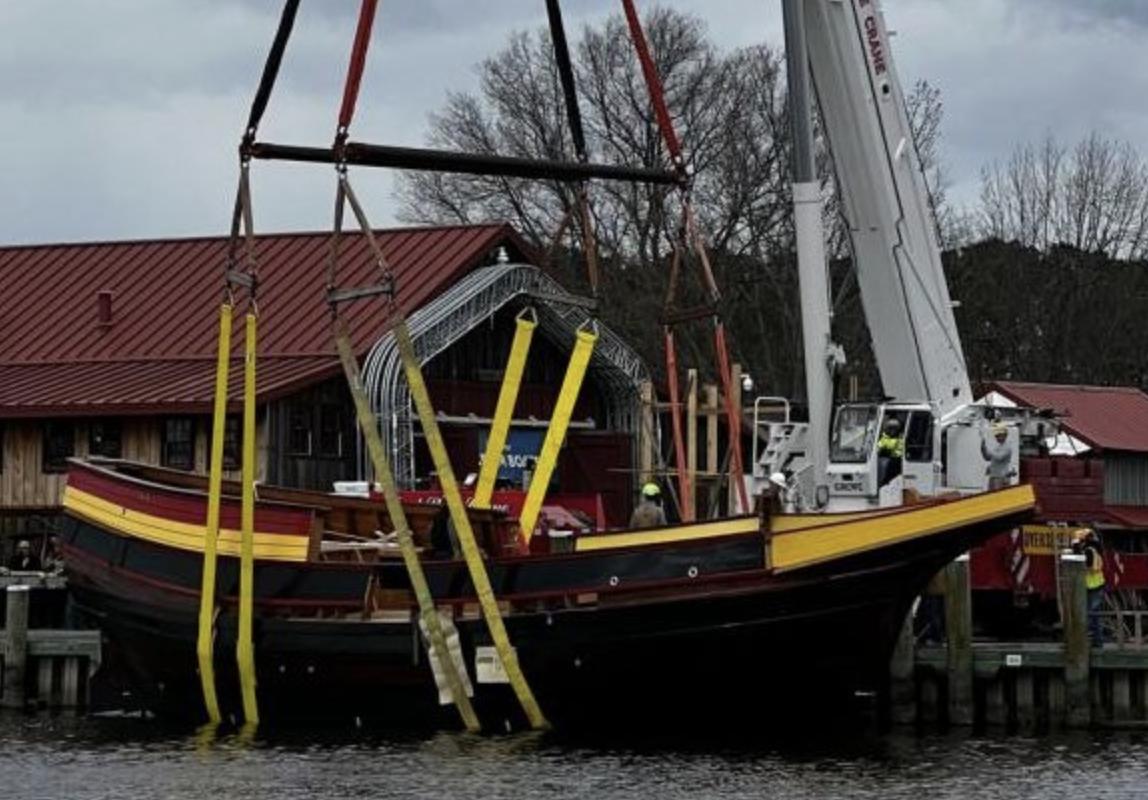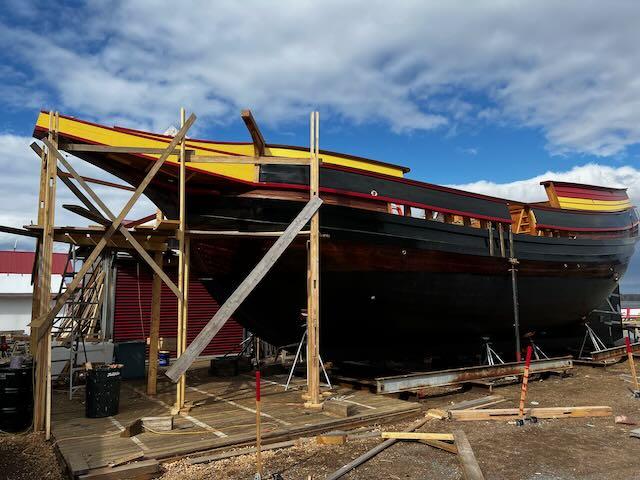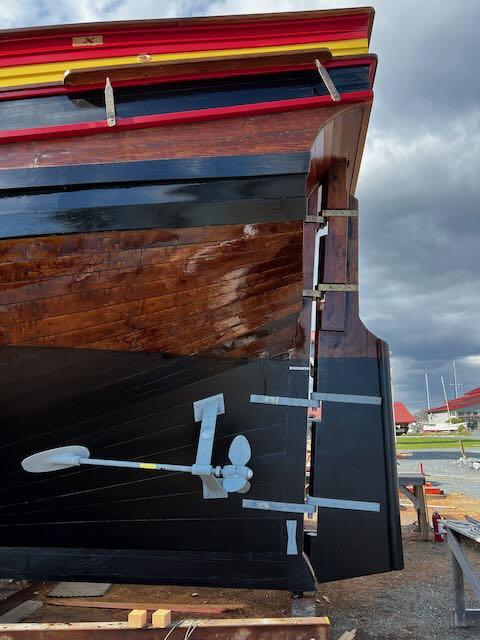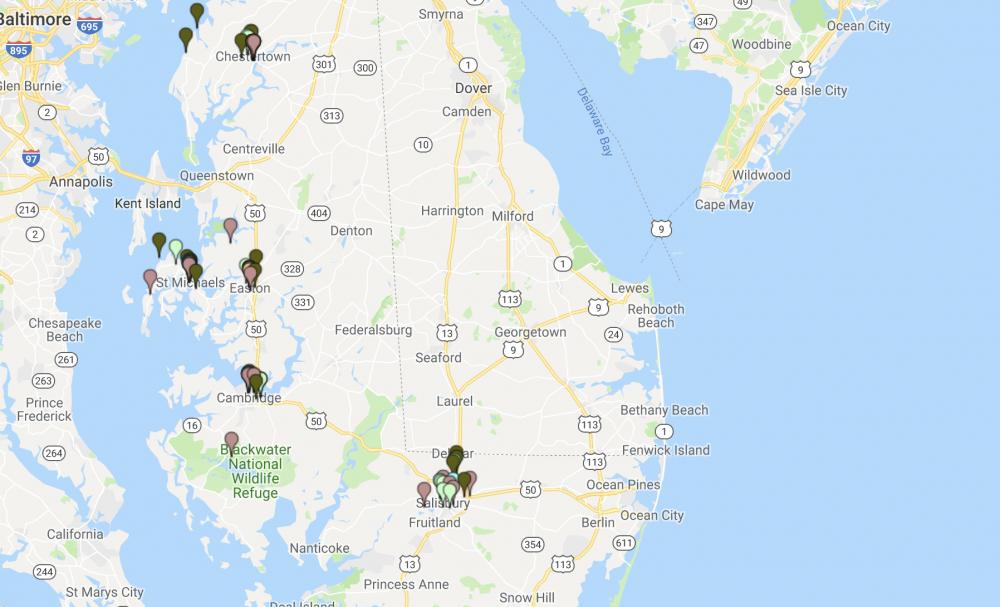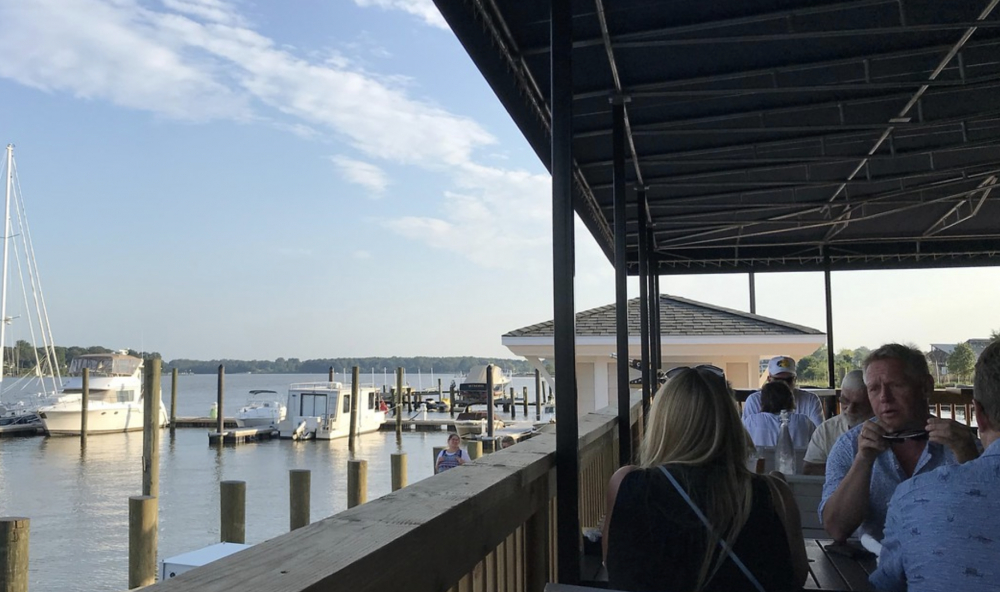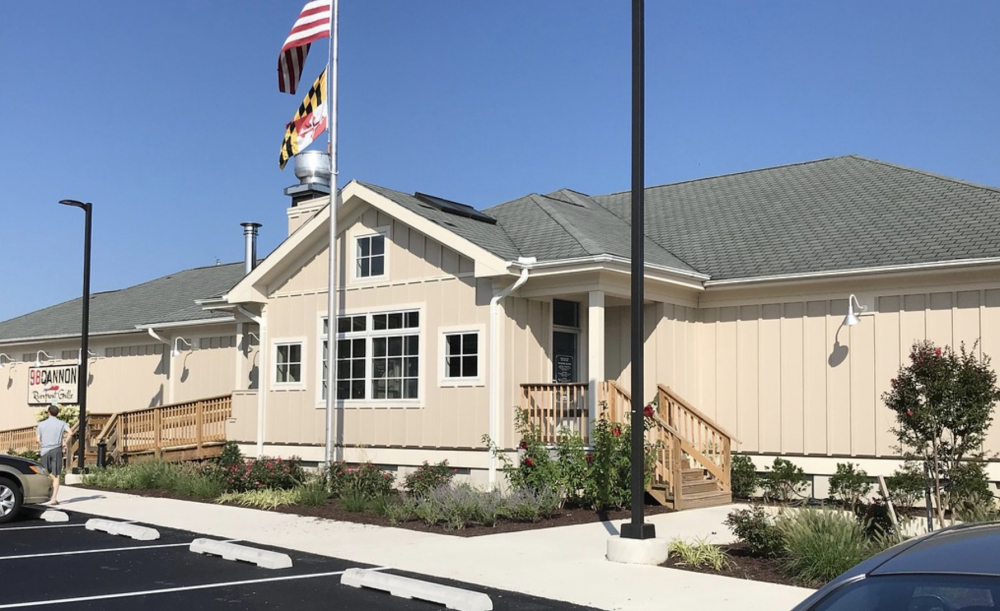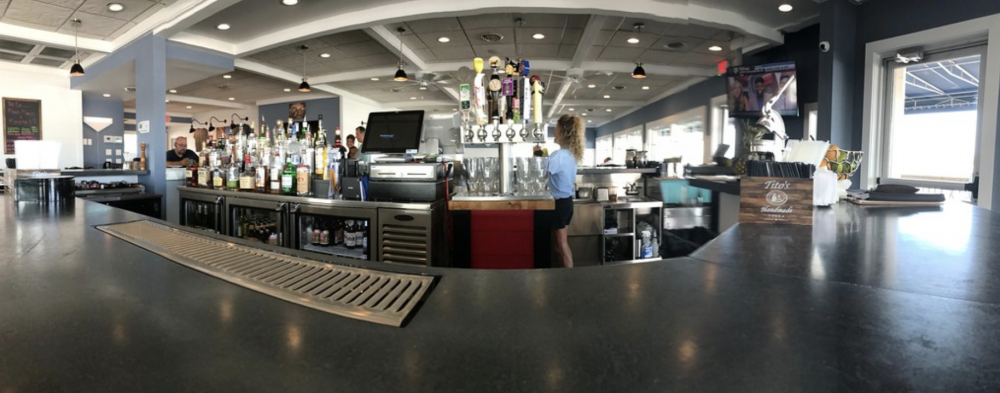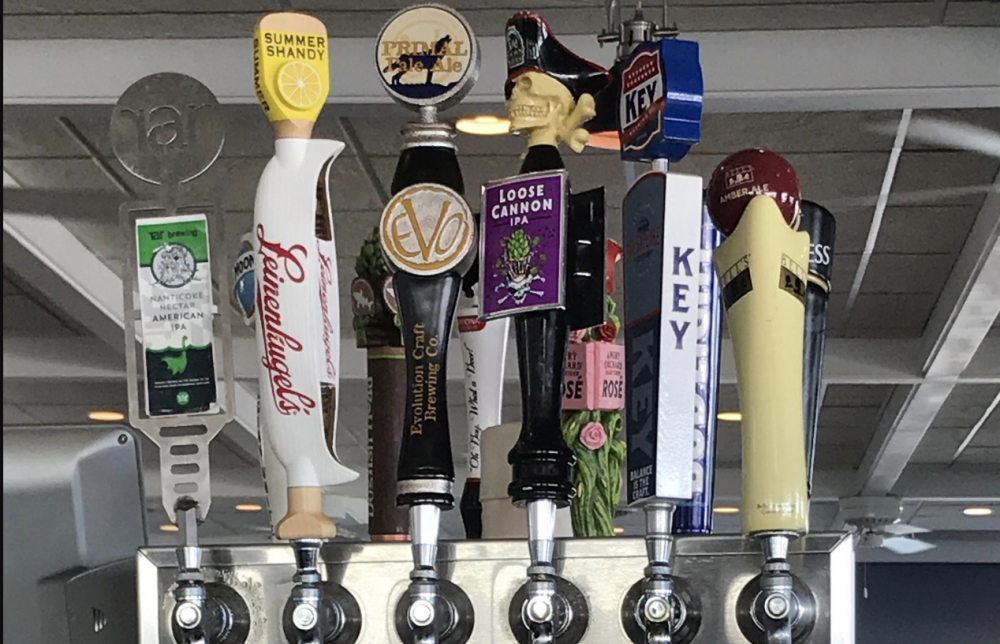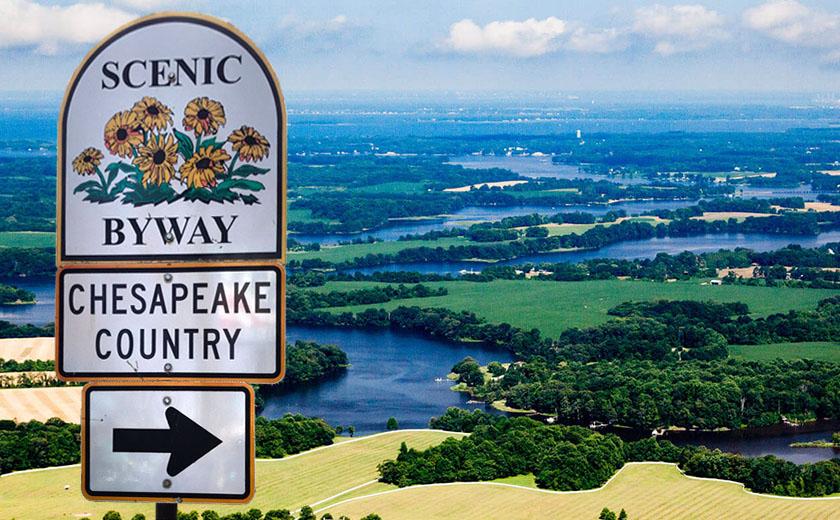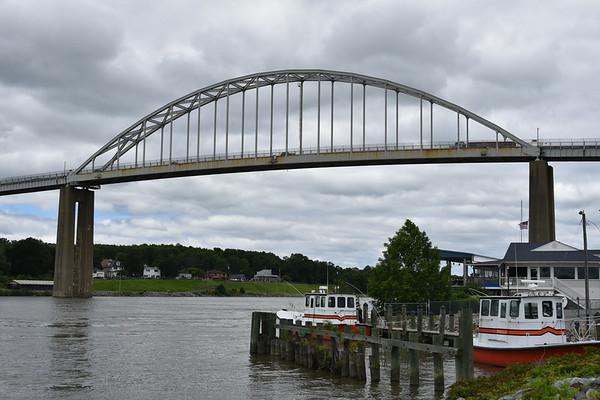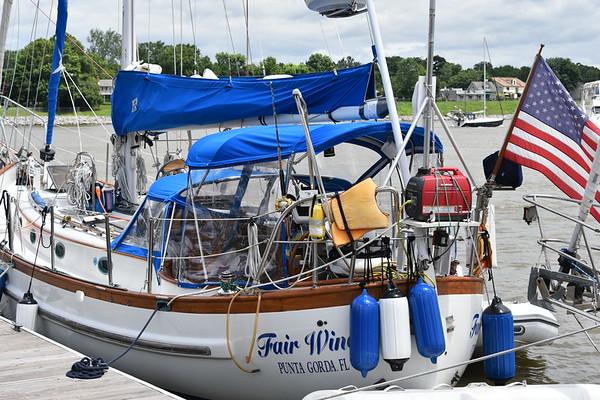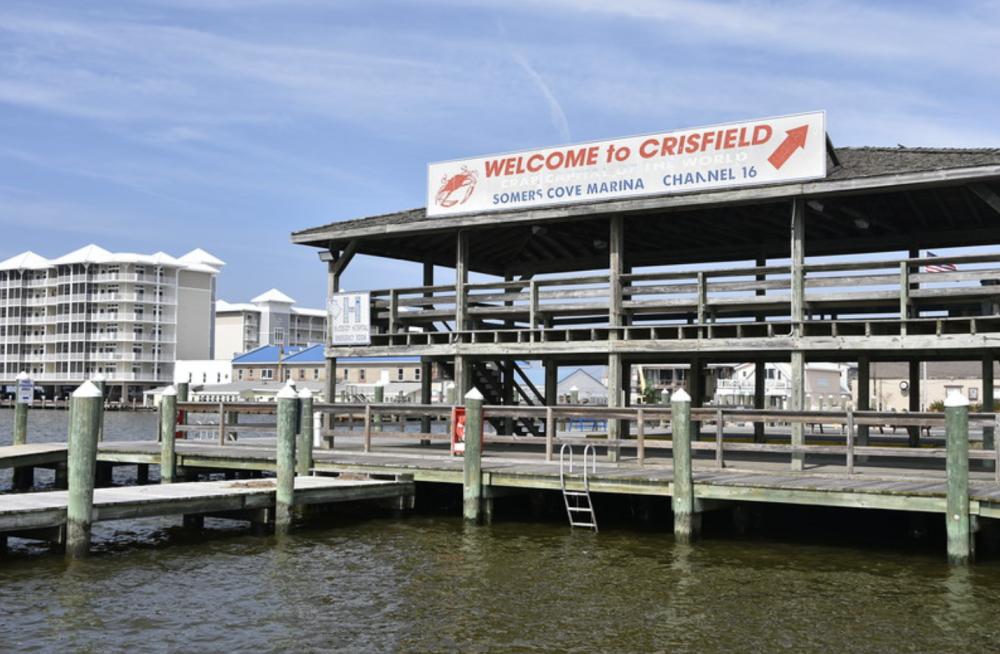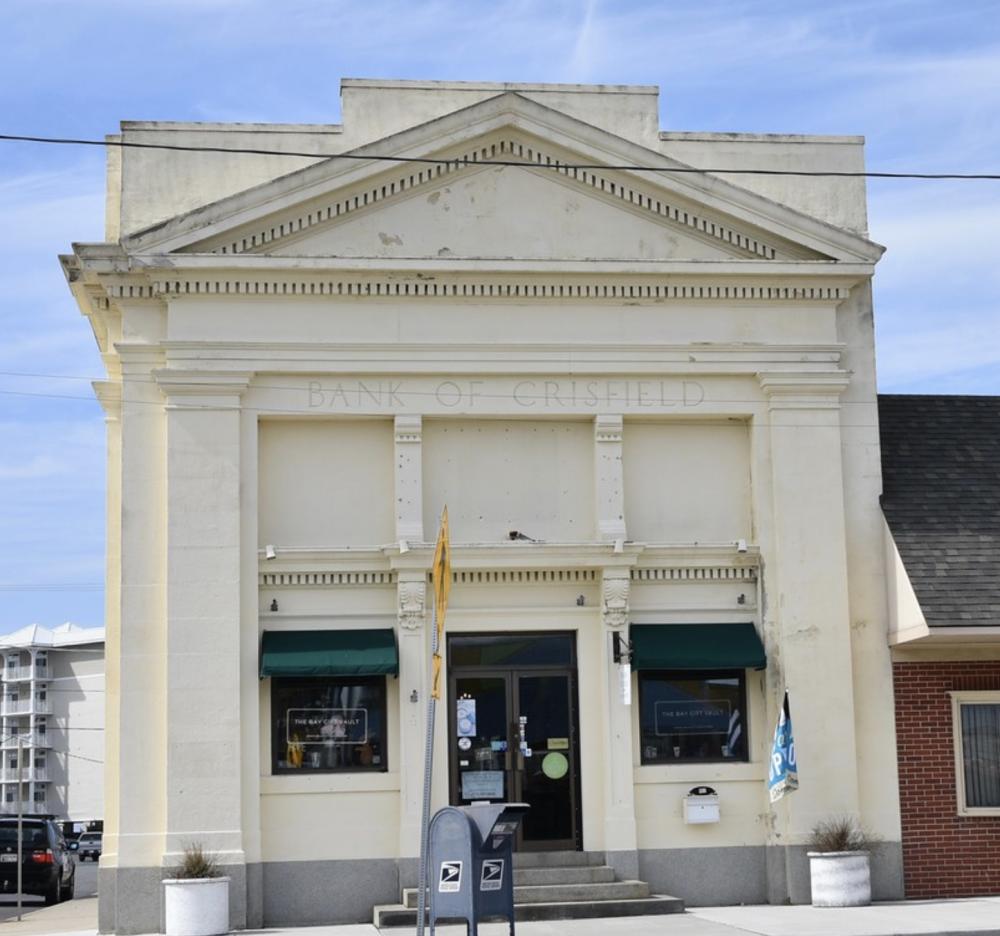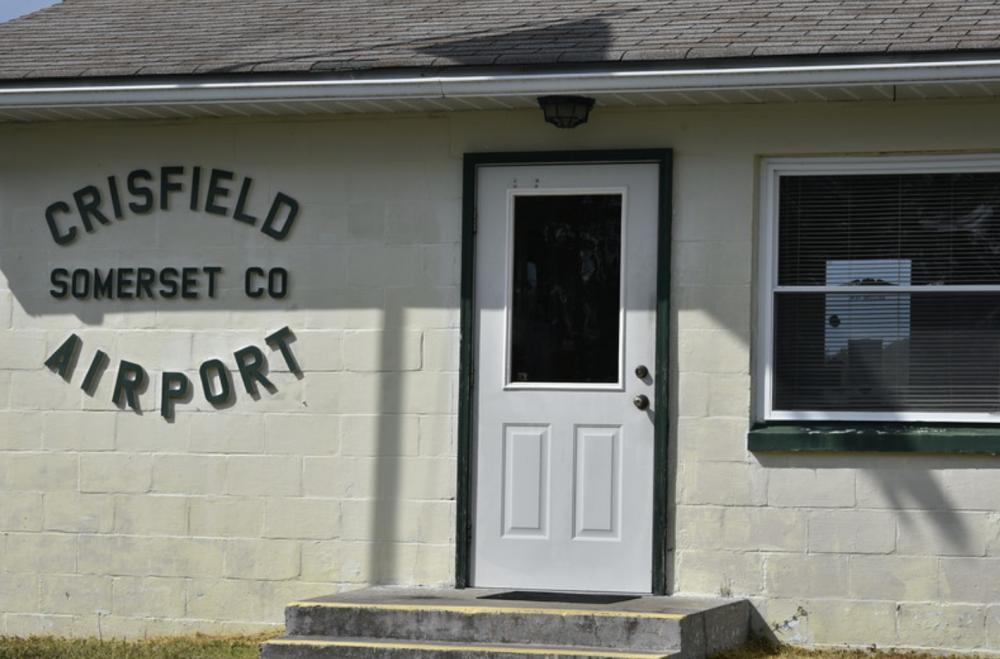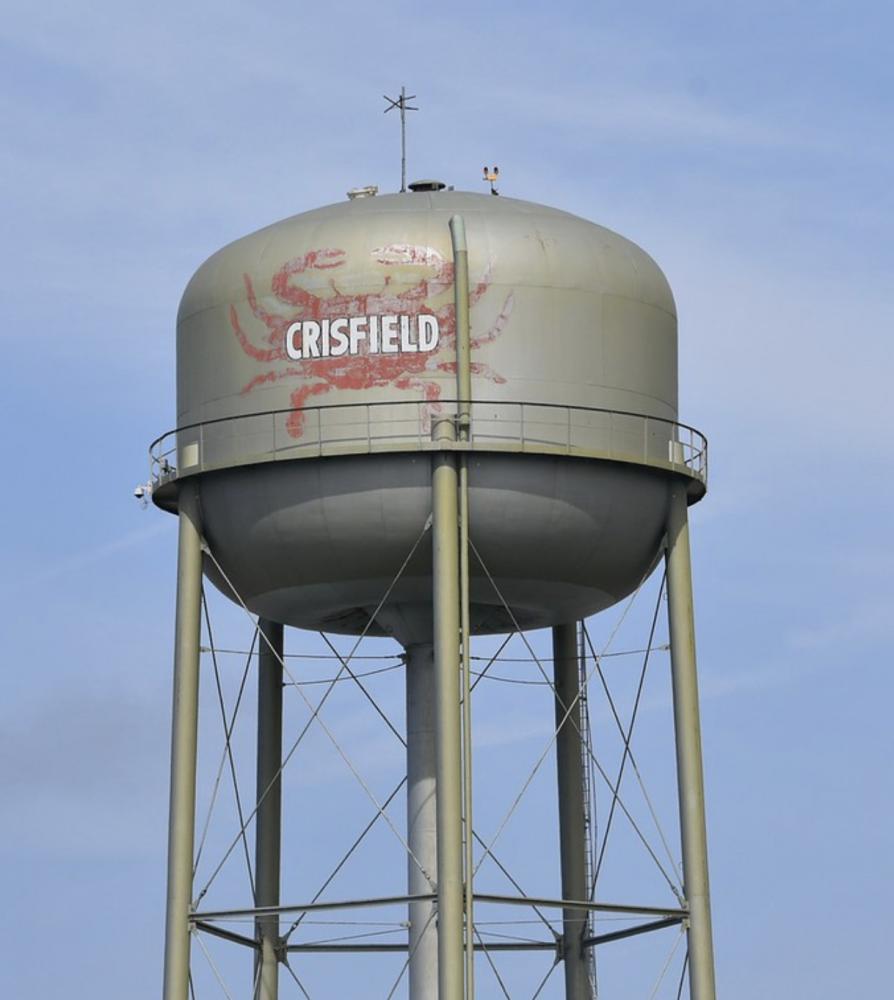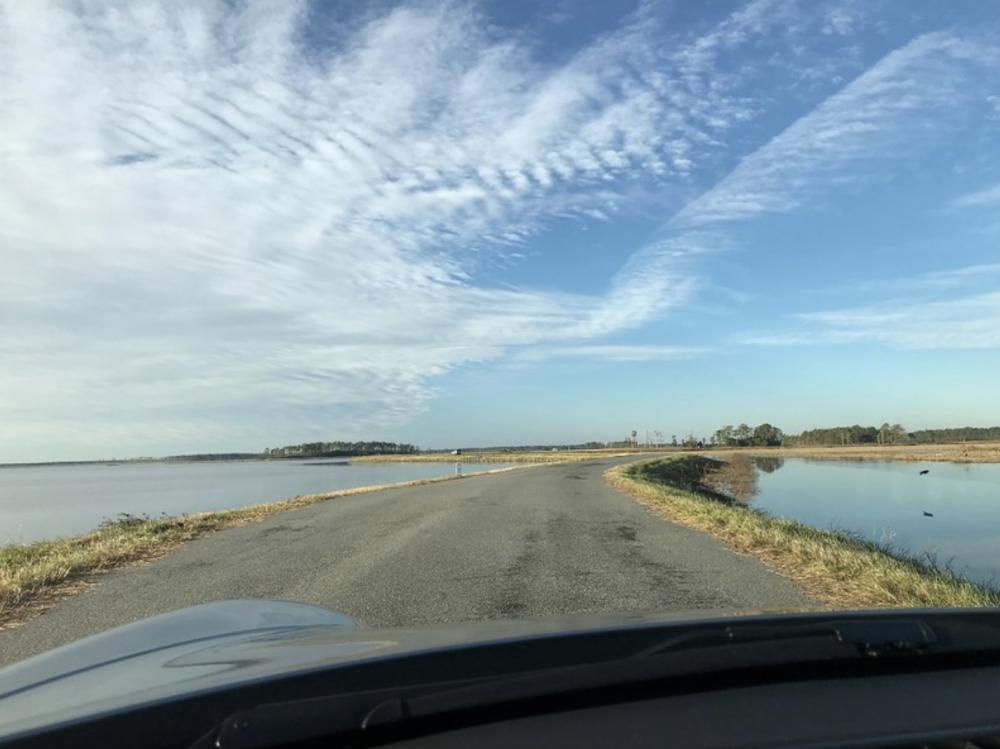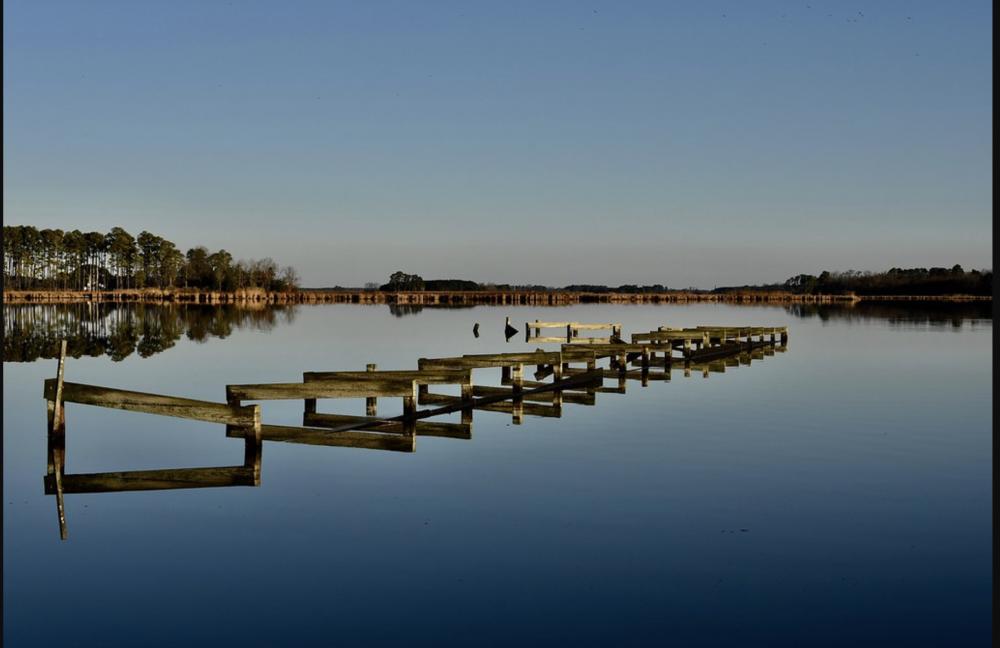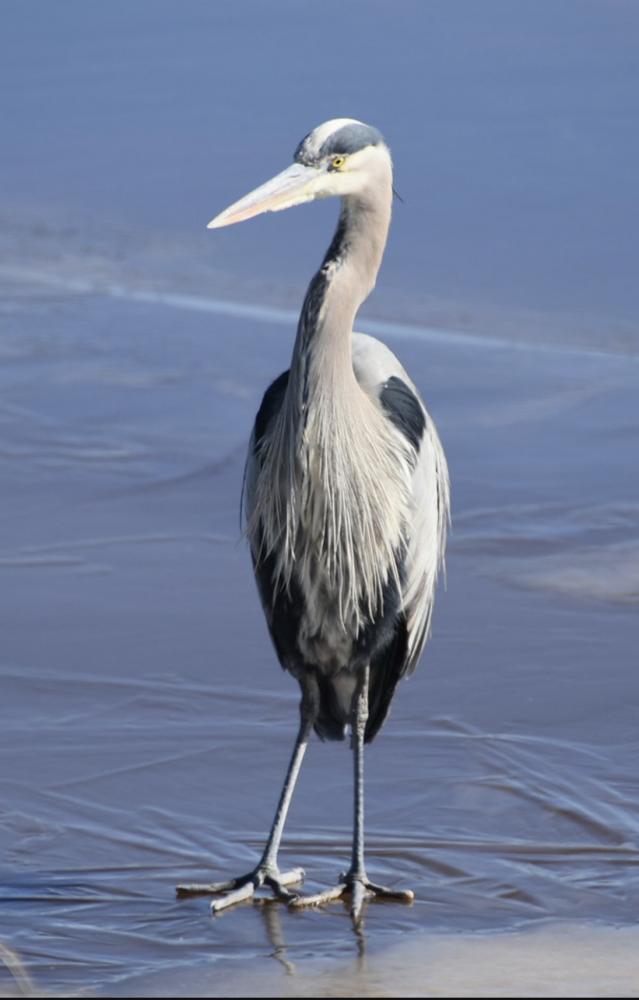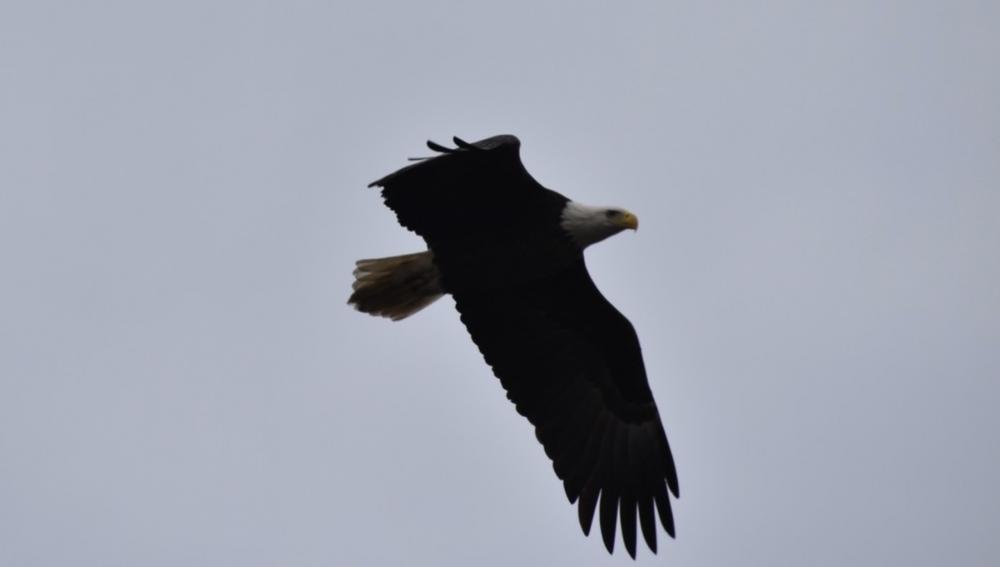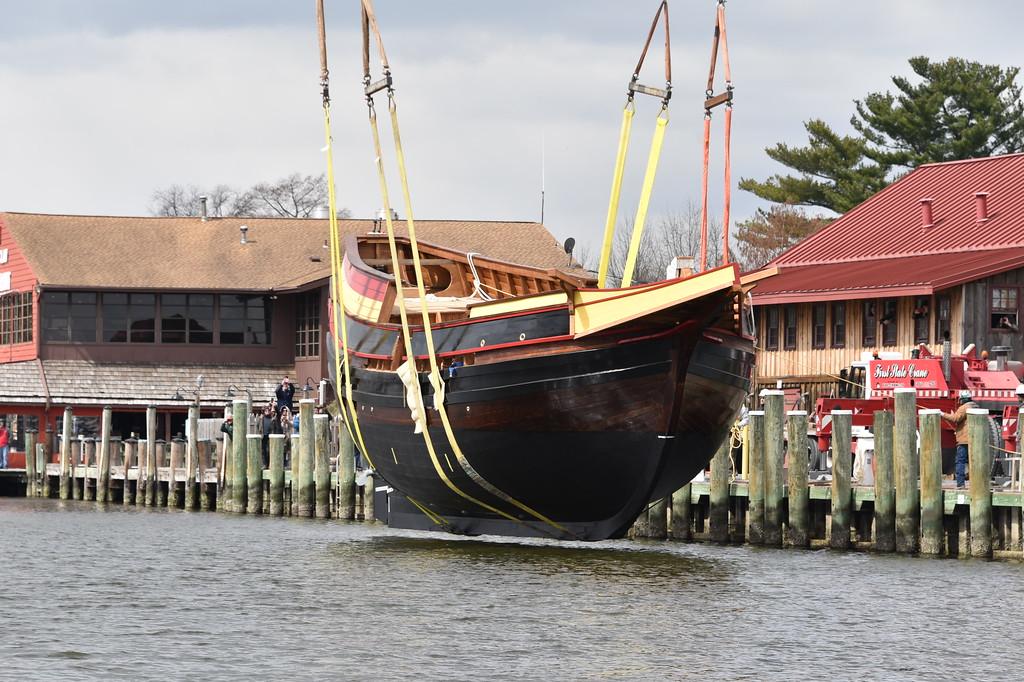 Fingers crossed that the wind calms enough to lift the Maryland Dove off the ground and into the water at the Chesapeake Bay Maritime Museum where it has been under construction for the past 3 years. With the construction platform mostly off and a beautiful paint job, the Dove is ready for its splash down into the waters of St. Michaels where work will be completed over several weeks.
Fingers crossed that the wind calms enough to lift the Maryland Dove off the ground and into the water at the Chesapeake Bay Maritime Museum where it has been under construction for the past 3 years. With the construction platform mostly off and a beautiful paint job, the Dove is ready for its splash down into the waters of St. Michaels where work will be completed over several weeks.Spy Moment: The Maryland Dove Takes to the Water – Updated
 Fingers crossed that the wind calms enough to lift the Maryland Dove off the ground and into the water at the Chesapeake Bay Maritime Museum where it has been under construction for the past 3 years. With the construction platform mostly off and a beautiful paint job, the Dove is ready for its splash down into the waters of St. Michaels where work will be completed over several weeks.
Fingers crossed that the wind calms enough to lift the Maryland Dove off the ground and into the water at the Chesapeake Bay Maritime Museum where it has been under construction for the past 3 years. With the construction platform mostly off and a beautiful paint job, the Dove is ready for its splash down into the waters of St. Michaels where work will be completed over several weeks.The Spy Newspapers may periodically employ the assistance of artificial intelligence (AI) to enhance the clarity and accuracy of our content.
